You are looking at your short grass meadow and dreaming of a bed of flowering perennials or bushes? But you already ache in the back just thinking of turning over all that grass and the hours of weeding ahead? Yet, there is a much easier method to transform part of your short grass meadow into a fertile bed, slowly but surely! This technique, inspired by permaculture, creates a rich bed using materials readily available in your garden. And without straining your lower back! Follow this tutorial — we explain everything!
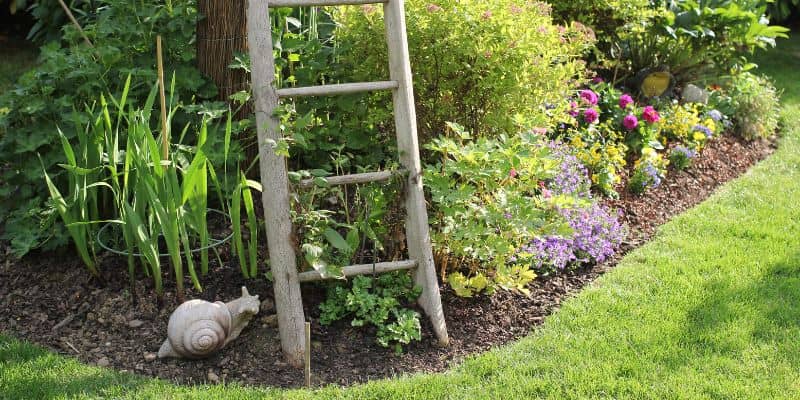
When to create your fertile bed?
The ideal time to create a new bed is autumn. This season offers favourable climate conditions, with soil still warm, increasing humidity and a short grass meadow gradually entering dormancy. Moreover, the green waste that will be used here will have time to break down over winter, producing rich soil by the following spring.
Note: you can also create your bed in spring or late summer, but bear in mind that organic materials will take longer to decompose. As a result, the soil may not be as rich for the first planting season and the battle against the grass more difficult.
Materials needed :
To carry out this project, you will need a few basic tools and materials:
- An edging tool — for example a half-moon edger, to mark out the bed.
- Garden waste: such as grass clippings from the short grass meadow, dead leaves, straw, vegetable garden scraps and shredded branches.
- Compost (decomposed or not) to enrich the soil.
- Time! Precious for allowing the different materials to decompose.
Step 1: Mark out the bed
- To begin, mark out the contours of your future bed using a suitable tool, such as a half-moon or similar implement. This first step is essential to clearly define the space allocated to the bed.
- Next, remove a strip of soil around the edge of the future bed, digging approximately 10 cm deep and 20 cm wide. Yes, this requires a little effort, but it’s the only tough part — keep going! In addition, this action has several advantages:
- First, it clearly separates the bed from the surrounding short grass meadow, thereby preventing the spread of roots and unwanted weeds.
- Furthermore, this trench acts as a natural barrier, making management and maintenance of the bed easier by clearly defining its perimeter.
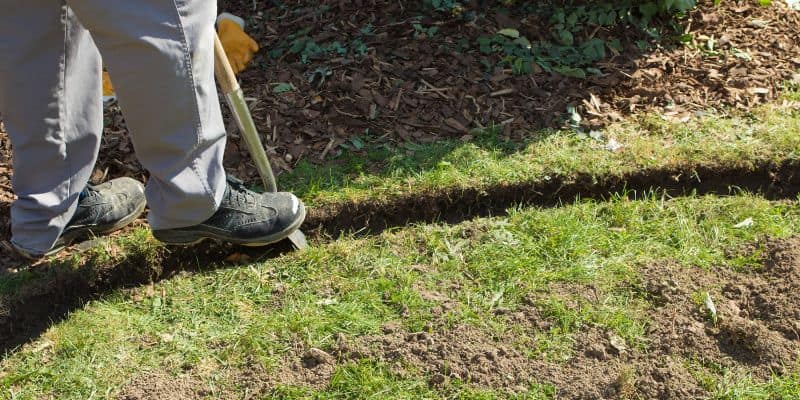
- Finally, place these strips of soil and removed grass in the centre of the future bed. As they decompose, the grass and roots will enrich the soil, contributing to the fertility and structure of the soil in this new growing area. The bed will also be raised, making maintenance, water drainage and its definition easier.
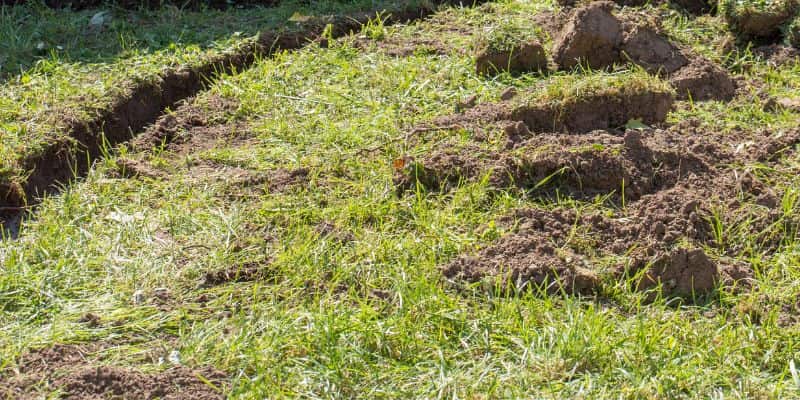
Step 2: Cover the area with organic materials
- After marking out the bed, it’s time to cover it with organic materials. Use (and recycle) your garden waste: grass clippings from the short grass meadow, dead leaves, straw, vegetable garden scraps, kitchen vegetable peelings, woodchip, BRF (ramial chipped wood), etc. You can also add compost, decomposed or not.
- You can increase these additions as the season progresses, to obtain a thick layer of at least 20 cm to smother the existing short grass meadow and thus prevent its regrowth within the bed.
- Moreover, these green and brown wastes will decompose gradually, enriching the soil with essential nutrients. This surface-composting method promotes the creation of rich, fertile soil, ideal for growing a variety of plants. Perfect for achieving lovely future flower displays or productive vegetable harvests!
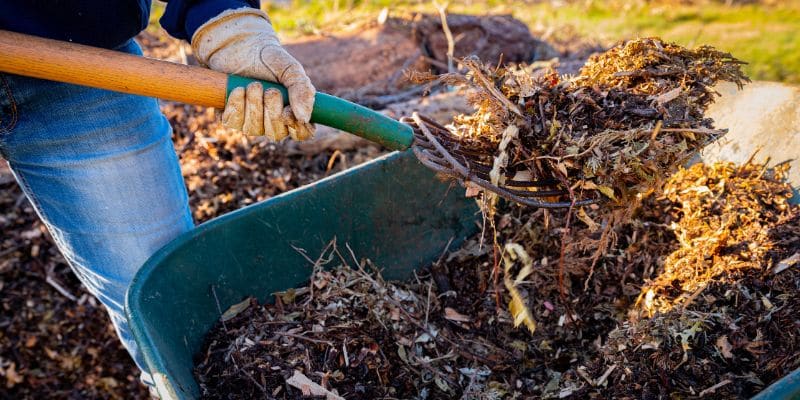
Step 3: Let time take its course
Let the organic layer decompose naturally over winter. The following spring you will find the soil has become looser and richer, ready for planting. You can loosen it further with a broadfork (grelinette).
Tip for poor, hard-to-work soils: if you find your soil is still not rich and friable in spring, add more compost and mulch, then wait a few more months, until the following autumn — a full year in total.
Step 4: Plant in the enriched bed
In spring, once the soil is ready, plant your bulbs, perennials or bushes. Remember to choose plants suited to your enriched soil, taking your climate zone into account. Plant them respecting the spacing and specific needs of each species.
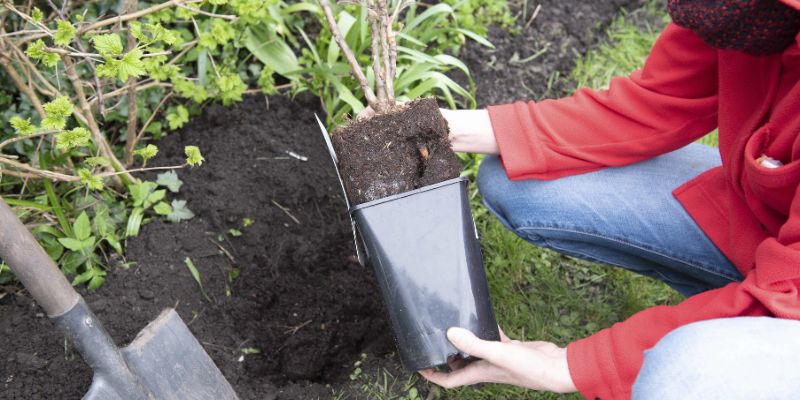
Step 5: Continue enriching your bed
- To preserve the fertility of your bed, continue to enrich it by adding well-matured compost on the surface in spring and autumn. Fork the soil with a hand fork to help incorporate it.
- Organic mulch, using materials like straw or dead leaves, helps retain moisture and limit weeds, while providing additional nutrients to the soil as it decomposes.































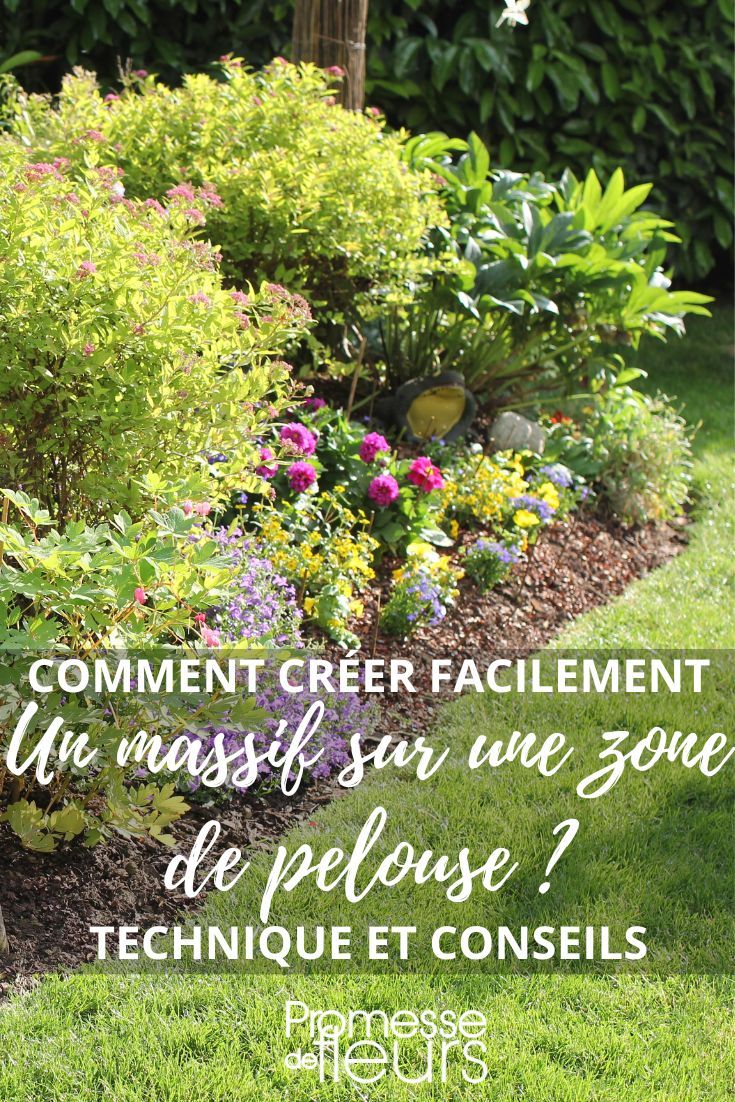
Comments